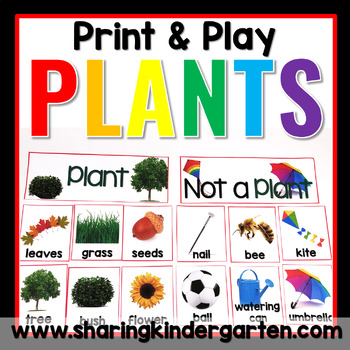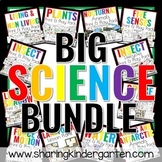All About Plants & Plants Unit What is a Plant Parts of a Plant Using Plants
- PDF
What educators are saying
Also included in
- Grab 6 of these science packs at one HUGE discounted price. This pack should cover science for at least 6 full weeks of school with lots of printables, pocket chart activities, charts, sorting, and writing integration. This pack includes:Plants Print & PlayLiving and Non Living Things Print &Price $26.55Original Price $30.00Save $3.45
- Grab 12 of these science packs at one HUGE discounted price in this Science Bundle for Kindergarten or First Grade. This pack should cover science for at least 12 full weeks of school with lots of printables, pocket chart activities, charts, sorting, and writing integration. This has the SAME unitsPrice $57.60Original Price $64.00Save $6.40
- Why not grab all these April or May bundle-themed activities in ONE bundle at one low price??byMary AmosonLet’s Connect!→ Sharing Kindergarten Website→ Facebook Page→ Instagram→ NewsletterSign up for my newsletter and you will receive a THANK YOU freebie as well as exclusive freebies delivered to yoPrice $36.75Original Price $48.75Save $12.00
Description
⭐This NEWLY UPDATED interactive plant unit is exactly what you need for your Kinders and 1st Graders! Your students will enjoy learning all about plants and how we use them while practicing their writing skills! It includes 40+ page easy-to-use plant and plant unit thatis full of activities for a full week of learning about plants that include anchor charts, pocket chart activities, writing prompts, printables, plant worksheets and so much more!
⭐⭐Now includes a matching 35-page GOOGLE SLIDE DIGITAL file that matches the pages included in this pack.
This unit is a week lesson plans all about plants that cover:
⭐What is a plant?
⭐What are the parts of a plant?
⭐How do we use plants?
⭐What does a plant need?
This plant unit is perfect for Kinders and more! This pack contains plant printables and playable activities to cover the topic of plants and flowers. You can use anchor charts as whole-group instruction. Plus, we provide small group activities and independent practice.
This pack covers the following topics and includes:
⭐What is a Plant?
What is a Plant? Teacher Charts and Student Printable
What is a Plant? Pocket Chart Sorting Pieces
What is a Plant? Printable
⭐What are the Parts of a Plant?
Parts of a Plant Teacher Charts and Student Printable
Parts of a Plant Pocket Chart Sorting Pieces
Parts of a Plant Printable
Uses the words: seeds, flower, stem, leaf, leaves, & more!
⭐How Do We Use Plants?
Use Plants Teacher Charts and Student Printable
Use Plants Pocket Chart Sorting Pieces
How Do We Use Plants Printable
⭐What Does a Plant Need?
Plant Need Teacher Charts and Student Printables (2 versions)
Plant Need Pocket Chart Sorting Pieces
Plant Need Printable
⭐2 Types of ABC Order Printables
2 Versions of a plant-themed syllable game and matching plant printables
⭐Plant or Not?
Science center activity and printable
What Others Are Saying:
⭐⭐⭐⭐⭐Extremely satisfied
"The resource pictures are nice and clear. My students were very engaging with each activities. They enjoyed learning about plants and applied in their personal life. Thanks for making this resource."
⭐⭐⭐⭐⭐Extremely satisfied
"Not only did my students learn from this, I also learned a couple of interesting facts from this. This resource made 'throwing' a lesson together so easy!"
⭐⭐⭐⭐⭐Extremely satisfied
"This packet is a must if you are going to be studying plants with your kids. This unit has a lot of great activities to do with the kids."
⭐⭐⭐⭐⭐⭐⭐⭐⭐⭐⭐
Check out these SCIENCE units:
All About Water Print & Play Pack
Arctic and Antarctic Animals Print & Play
by Mary Amoson
Let’s Connect!
→ Sharing Kindergarten Website
Sign up for my newsletter and you will receive a THANK YOU freebie as well as exclusive freebies delivered to your inbox.:)
Sharing Kindergarten ©








